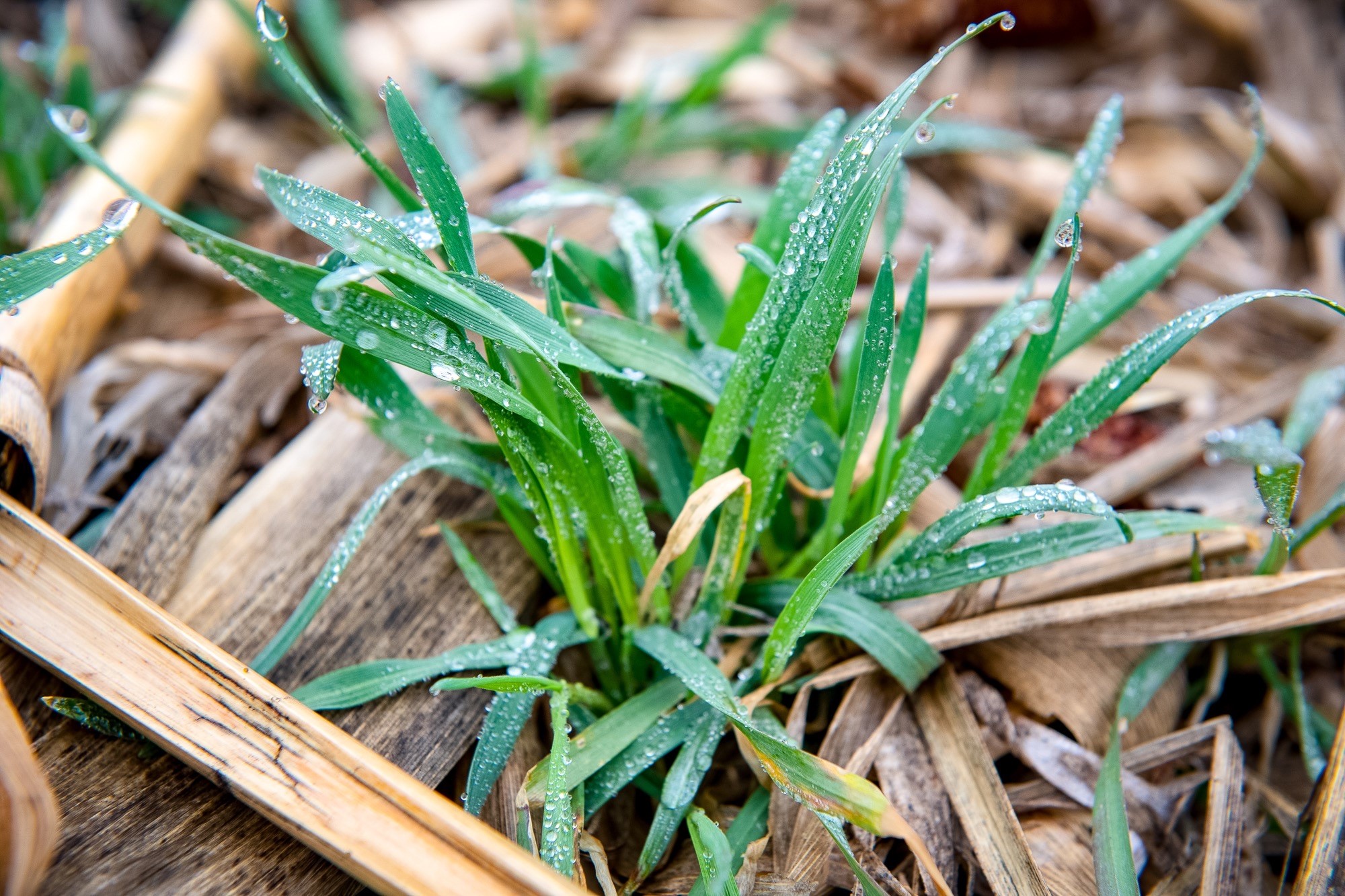
Upcoming Research Center for Farming Innovation trials to focus on flattening the learning curve of cover crop yield drag. (Photo: Joseph L. Murphy/Iowa Soybean Association)
2021 trials focus on maximizing corn, cover crops
March 18, 2021
By Darcy Maulsby, ISA contributor
While more farmers are succeeding with soybeans after cover crops, there’s a bigger learning curve for corn following cover crops due to concerns about yield drag. That’s why the Iowa Soybean Association’s (ISA) Research Center for Farming Innovation (RCFI) will conduct more corn and cover crops trials in 2021.
“We want to help farmers answer one big question: ‘How can I tweak my current nitrogen system to eliminate yield drag and get as much production as possible from my corn and my cover crop?” said Anthony Martin, senior field services program manager for RCFI.
There are still a lot of questions surrounding cover crops, Martin added. “It seems like nearly every farmer I talk to knows someone who had a failure with cover crops at some point.”
A lack of proper planning is usually at the root of these issues. There are some big differences between raising soybeans after cover crops and corn after cover crops. “Soybeans are fairly forgiving,” Martin said. “Corn is a different story. The termination period is more critical, since cover crops are competition that can pull moisture and nitrogen (N) away from corn.”
If the cover crop isn’t managed properly, it can become a yield robber. “Can we get around this?” Martin asked. “Yes. With proper planning, you can meet or exceed non-cover-crop corn yields.”
2020 Corn/Cereal Rye Study Shows Impact of Early-Season N
Consider an RCFI small-plot study conducted near Clarion, Iowa, in 2020. Researchers used equal rates of N in five different scenarios, including:
- No cover crop- 150 lbs. N fall anhydrous
- Cover crop- 150 lbs. N fall anhydrous
- Cover crop – 100 lbs. fall anhydrous + 50 lbs. N as starter
- Cover crop- 100 lbs. spring anhydrous + 50 lbs. N as early sidedress
- Cover crop- 50 lbs. spring anhydrous + 100 lbs. broadcast urea+AMS
Yields were 218 bushels per acre in the no-cover-crop trial and 220 in the cover-crop trial. Things got interesting, however, when the split N applications were added. Yields ranged from 234 (cover crops + early side-dressing) to 238 (cover crop + urea/AMS) to 240 (for cover crops + starter).
“While we’ve done cover crop trials for about five years, this was the first time we’ve really dug into the N issue with corn and cover crops,” Martin said. “The 2020 trials showed the value of front-loading N applications, especially when 30% to 50% of the N is applied early.”
The yield results supported what the RCFI team had suspected about the value of applying 32% N right after planting, followed by sidedressing urea by the V2-V4 stage. “Sometimes the value of our research isn’t to uncover new information,” Martin said. “It’s to collect data that supports anecdotal evidence.”
It’s also important to collect data from multiple years of trials, not just one year. “That’s why we’re doing more corn and cover crop research in 2021,” Martin said. “This gives you a clearer picture.”
2021 research trials
The 2021 research will focus on:
· Nitrogen management (source, time, placement, rate). This will build on the studies conducted in 2020, Martin said.
· Early-versus-late termination. How much growth is needed with the cover crop to achieve soil health benefits, livestock grazing need or meet requirements for Environmental Quality Incentives Program (EQIP) contracts? “Also, if we don’t get a lot of growth after the cover crop is seeded, how far can we push the termination date to allow for more growth in the spring?” Martin said.
· Tillage. Trials will focus on strip-till versus conventional tillage, and no-till versus strip-till. “This comes down to conservation,” Martin said. “How do you minimize soil disturbance while ensuring good seed-to-soil contact for the cover crop?”
Get involved with on-farm research
Interested in working with RCFI on corn and cover crop trials? These studies can be conducted in any region of Iowa. They are a good fit for farmers with soil health goals and for intermediate/advanced cover croppers, Martin said. Simply fill out the ISA research engagement form to get started.
“You don’t go into this blind when you work with us,” Martin added. Here’s what you can expect once you fill out the research engagement form:
An ISA or RCFI team member will schedule a time to visit with you over the phone or at your farm. “We want to learn more about your operation and find out what you’re interested in,” Martin said. “These conversations will also help clarify expectations from both farmers and RCFI.”
RCFI will take your farm’s information (planter width, sprayer width, etc.) and enter it into a software program. This generates a visual plan of what your field trial(s) will look like.
Trials will include in-season crop scouting and data collection by RCFI. “Then you provide yield monitor data at harvest,” Martin said. “We’ll stay in touch with you every step of the way and will show you the results after all the data is collected and analyzed.”
If you have a specific crop production or conservation question you’d like to answer that goes beyond corn production and cover crops, make a note on the ISA research engagement form.
“We want to hear from you,” Martin said. “We’re here to help you try new things and find solutions for greater productivity, profitability and sustainability for both soybeans and corn.”
Back